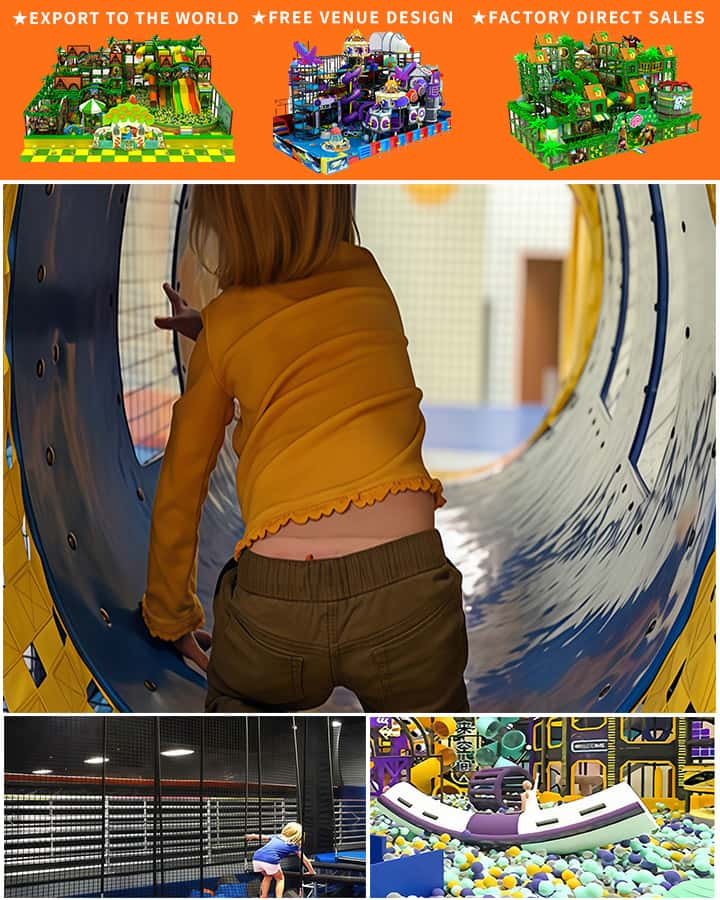Creating a kids’ playground can be a rewarding project that provides endless enjoyment and developmental benefits for children. Whether you are planning a backyard play area for your own little ones or a community playground, careful planning and considerations are essential to ensure safety and fun. Here’s a step-by-step guide on how to build a kids’ playground that is both enjoyable and secure.
Step 1: Planning and Design
The first step in building a playground is thorough planning and design. Determine the purpose of the playground, whether it’s for residential use, a school, or a public park. Consider the age range of the children who will be using it, as different age groups have varying needs and safety requirements.
Key Considerations:
- Location: Choose a location that is safe and accessible. Ensure there is enough space around the playground for supervision and to prevent accidents.
- Age Groups: Tailor the equipment and structure sizes to fit specific age groups. For example, toddlers need different structures compared to school-aged children.
- Features: Decide on the types of equipment you want to include such as slides, swings, climbing frames, seesaws, and sandbox areas.
- Safety Surfacing: Plan for appropriate safety surfacing materials like rubber mats, wood chips, or sand to cushion falls.
- Accessibility: Make sure the playground is accessible to children with disabilities by including ramps and adaptive equipment.
Step 2: Site Preparation
Proper site preparation is crucial for the longevity and safety of your playground. This involves clearing the site, leveling the ground, and installing proper drainage if necessary.
Steps Involved:

- Clear the Area: Remove any rocks, roots, or debris from the playground area.
- Level the Ground: Ensure the ground is level to provide a stable base for the playground equipment. Use fill dirt if necessary.
- Install Drainage: Proper drainage prevents water accumulation, which can lead to slippery surfaces and damage to the playground materials. Consider installing a drainage system or ensuring the site slopes away from the structures.
Step 3: Installing the Structures
Once the site is prepped, you can begin installing the playground structures. Follow the manufacturer’s instructions carefully to ensure everything is assembled correctly.
Popular Playground Structures:
- Swings: Ensure swings are hung securely and have safety chains or straps. Position them at least 6 feet apart to avoid collisions.
- Slides: Anchor slides properly and check that the entry points and ladders are secure. The landing area should be covered with soft material to cushion falls.
- Climbing Frames: Assemble climbing frames with stability in mind, making sure all bolts are tight and platforms are stable.
- Seesaws: Ensure seesaws are balanced and have smooth edges to prevent injuries. They should also be anchored securely.
Step 4: Adding Finishing Touches
To complete the playground, add features that enhance safety and usability.
Essential Additions:
- Safety Surfacing: Apply rubber mulch, wood chips, or other cushioning materials under and around the playground equipment to prevent injuries from falls.
- Fencing: Install a fence around the perimeter of the playground to keep children safe and contained.
- Shade Structures: Include shaded areas to protect children from harsh sun exposure.
- Signage: Post rules and guidelines near the entrance to promote safe play practices.
Step 5: Maintenance and Safety Checks
Maintaining the playground is essential to ensure it remains safe and functional over time. Regular checks and maintenance can extend the life of the equipment and prevent accidents.
Maintenance Tips:
- Regular Inspections: Conduct routine inspections of all playground equipment to check for wear and tear, loose bolts, and potential hazards.
- Repair and Replace: Address any issues immediately, whether it’s tightening bolts, repainting chipped paint, or replacing broken parts.
- Cleanliness: Keep the playground clean by removing litter and checking for debris regularly.
- Safety Updates: Stay informed about the latest safety standards and update your playground accordingly to meet any new regulations.
Conclusion
Building a kids’ playground requires thoughtful planning, meticulous installation, and ongoing maintenance to create a safe and enjoyable environment for children. By following these steps and considering the unique needs of your users, you can create a playground that provides years of fun and development. Remember, a well-designed and maintained playground not only entertains but also supports the physical and social development of children, making it a valuable addition to any community or household.




